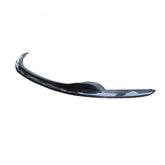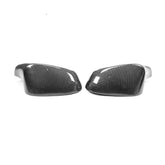Introduction
The BMW X5 has established itself as a cornerstone of the luxury SUV market since its debut in 1999. Known for blending performance with luxury, the X5 has evolved significantly across its generations, continually incorporating new technology, refined designs, and advanced features to meet the growing expectations of its clientele. This article explores the evolution of the BMW X5 through its various generations, highlighting key developments and innovations.

1. First Generation (E53; 1999-2006)
Origins and Innovations
- Launch Context: Introduced as BMW's first SUV, the X5 was marketed as a Sports Activity Vehicle (SAV) to emphasize its on-road ability despite its size.
- Key Features: It featured a unibody design and came equipped with a range of inline-6 and V8 engines, all-wheel drive, and an advanced suspension system designed to offer a dynamic driving experience that was unusual for SUVs at the time.
Design and Reception
- Design Elements: The E53 boasted a robust, yet elegant design that clearly echoed BMW's styling cues with the kidney grille and dual headlights.
- Market Impact: It quickly became popular for those seeking a blend of luxury, utility, and performance.
2. Second Generation (E70; 2007-2013)
Technological Advancements
- Enhancements: The E70 introduced adaptive drive systems, a more luxurious interior, and increased size for better comfort and space.
- Innovation: BMW incorporated the iDrive system, improving onboard technology and connectivity.
Engine and Performance
- Powertrain Options: Introduction of more powerful engines and the first X5 M model in 2009, equipped with a twin-turbo V8 engine, setting a new standard for performance in the luxury SUV category.
3. Third Generation (F15; 2014-2018)
Refined Design and Sustainability
- Design Update: The F15 featured a more modern design with sharper lines and a more cohesive aesthetic integration between the grille and headlights.
- Efficiency: Introduction of the X5 xDrive40e, the first plug-in hybrid version, marking a significant step towards sustainability.
Technology and Safety
- Advanced Features: Enhanced safety technologies including BMW’s Driving Assistant Plus package, which offered semi-autonomous driving capabilities.
4. Fourth Generation (G05; 2019-Present)
Cutting-Edge Technology and Luxury
- Latest Innovations: The G05 has embraced the latest in automotive technology with features like the BMW Live Cockpit Professional and the introduction of the BMW Intelligent Personal Assistant.
- Luxury Elements: Increased focus on luxury with options for high-end materials, enhanced comfort features, and a more spacious interior.
-

Performance and Electrification
- Engine Enhancements: Introduction of more efficient and powerful engines, including mild-hybrid technology.
- Electrification: The latest models include the BMW X5 xDrive45e, offering a significantly improved electric range and performance, underlining BMW’s commitment to an electrified future.
Conclusion
The evolution of the BMW X5 mirrors the broader trends in the automotive industry, from the focus on performance and luxury to the incorporation of advanced technologies and a push towards electrification. Each generation has brought significant enhancements, making the X5 not only a pioneer in the luxury SUV segment but also a testament to BMW's ability to innovate and adapt in a rapidly changing market. As the X5 continues to evolve, it remains a key figure in the luxury SUV market, offering a unique blend of performance, comfort, and cutting-edge technology.










